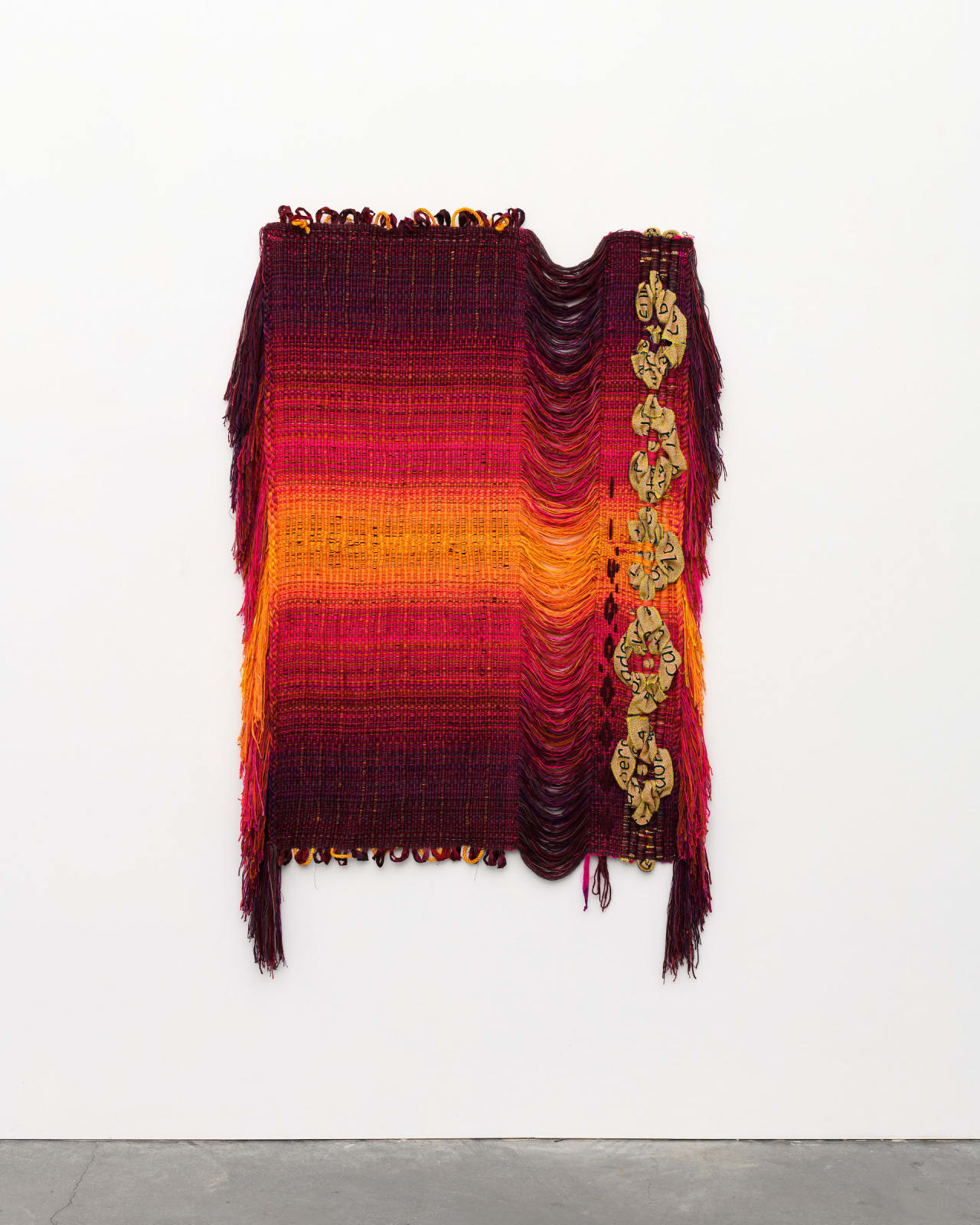-
Kira Dominguez Hultgren USA, b. 1980
Luz, 2022Wool, acrylic, cotton, linen, silk, sisal; fabric woven with the names of Luz (Malinche, Fuente de los cántaros, Lavandera, India con frutas, Tejedora, La molendera, La maestra rural, Vendedora mexicana de flores, Madre)73 x 45 x 3 in
185.4 x 114.3 x 7.6 cmCopyright The ArtistFurther images
Woven in the leftover warp from To Carry Every Name but Your Own, this work follows the design of striped serape blankets mirrored and unfolded in the middle. The pattern...Woven in the leftover warp from To Carry Every Name but Your Own, this work follows the design of striped serape blankets mirrored and unfolded in the middle. The pattern woven into this piece on the right side of the work is made from Jacquard-woven fabric strips with all the names of Luz Jiménez (1897-1965, Milpa Alta, Mexico), called the most painted woman in Mexico. These names are the titles of some of the pieces for which she modeled, “The Mexican Flower Seller,” “The Washer,” “The Indian with Fruit,” “The Weaver,” etc.
In the middle, the weaving is left undone, left to droop; on the right edge, the woven and stitched patterns run out of material and form. The woven pattern in this piece is patterned after Jiménez’s weaving, as seen in the paintings and photographs by artists from the Mexican Modernist School (Diego Rivera, Jean Charlot, Fernando Leal, José Clemente Orozco and Tina Modotti).
Jiménez used the platform given to her as a model for these artists to tell and publish her own stories about the Mexican Revolution, her hometown of Milpa Alta, Nahua culture and identity, and worked with ethnographers to translate Náhuatl. Today there is a growing movement of those who recognize Luz Jiménez's voice and legacy.Provenance
To Carry Every Name but Your Own, Eleanor Harwood Gallery, San Francisco CA, September 10 to October 22, 2022Exhibitions
To Carry Every Name but Your Own, Eleanor Harwood Gallery, San Francisco CA, September 10 to October 22, 2022








